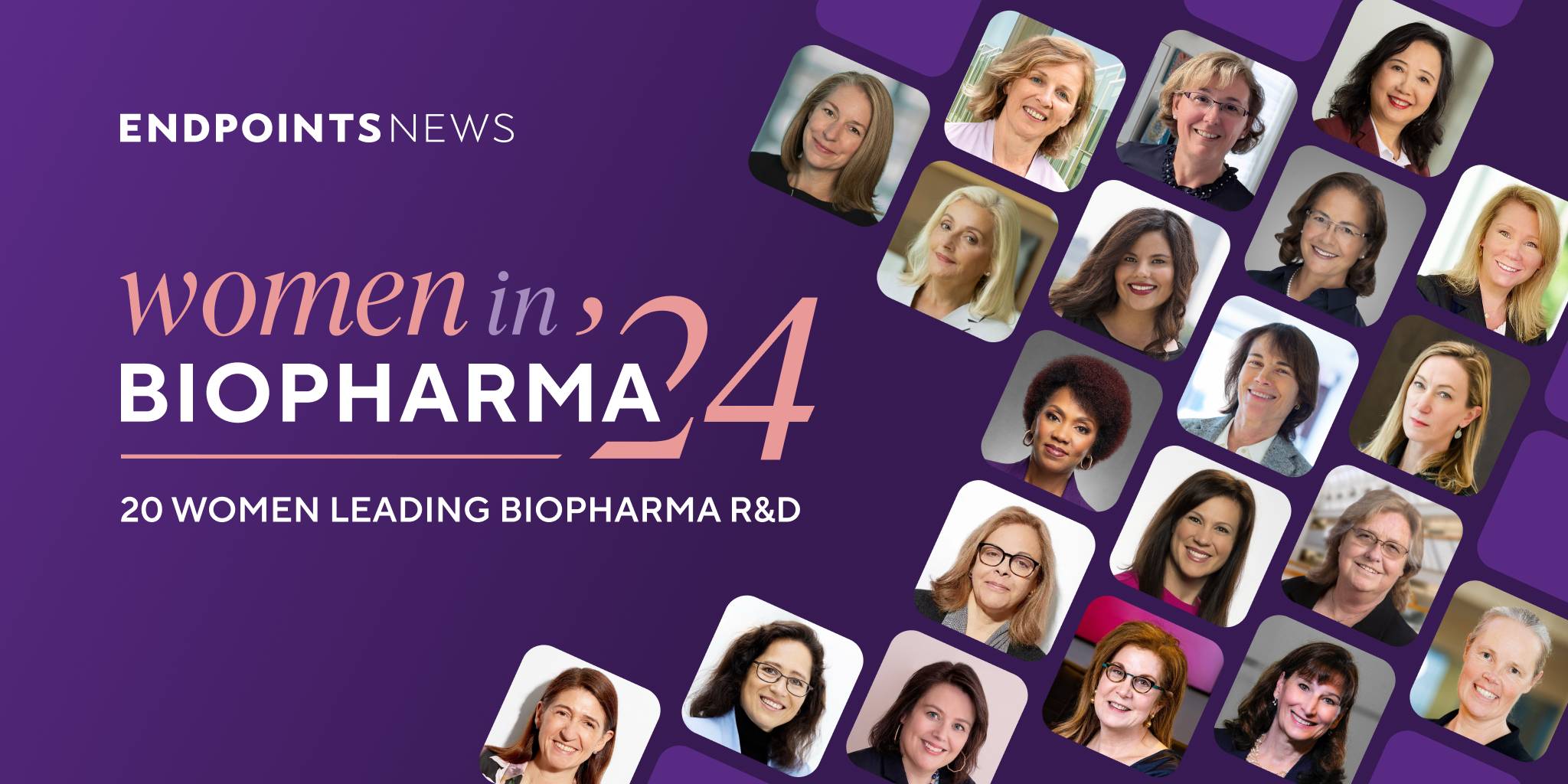
Special report 2024: Meet 20 women breaking new ground in biopharma R&D
Dedicated to the memory of Natalie Grover, who co-created the Women in Biopharma R&D special report while she was a reporter at Endpoints from 2018-2020. Natalie passed away earlier this year, but part of her legacy lives on through this project.
When Natalie Grover and Amber Tong launched Endpoints News’ Women in Biopharma R&D report in 2019, they set a few key ground rules.
They decided to give equal airtime to honorees’ R&D accomplishments and their experience as women leaders; to not shy away from hard questions; and to try their best to bring these women the recognition they deserve. Natalie’s indignation at gender inequality, her passionate belief in change, and her love of a good story set the tone for what has become a beloved annual tradition.
We have now celebrated more than 120 women breaking boundaries in biopharma R&D. Natalie and Amber’s vision has transformed into a newsroom-wide effort involving more than 17 reporters and editors. We’re pleased to introduce you to 20 women driving change in 2024. Thank you for continuing the tradition with us. — Amber Tong and Nicole DeFeudis
- Annaliesa Anderson: Going from bacteria to vaccines, Annaliesa Anderson shepherds Pfizer into RSV competition
- Allison August: Comanche Bio CMO eyes long-awaited treatment for pregnancy condition
- Sharon Barr: AstraZeneca’s biopharma head on applying lessons from rare disease to chronic disease
- Johanna Bendell: Picking drugs for cancer patients of the future
- Kristina Burow: ARCH managing director enjoys ‘every single minute’ of building the blueprint for biotechs
- Anna Windle and Karin Conde-Knape: Wegovy work from the US to the global stage
- Susan Galbraith: How AstraZeneca’s oncology head charted a path in precision medicine
- Quita Highsmith: Genentech’s first chief diversity officer on being a ‘changemaker’
- Jula Inrig: Travere’s CMO reflects on the importance of collaboration
- Iya Khalil: Bringing the oncology playbook — powered by AI — to fuel Merck’s pipeline
- Theresa LaVallee: When the ninth PD-1 also marked a historic first
- Jeanne Loring: After years of pioneering stem cell work, a notable researcher pushes for a breakthrough
- Jirong Lu: The protein biochemist behind Lilly’s biggest antibody drugs
- Mariann Micsinai-Balan: Moving from Wall Street to pharma to bring AI into R&D
- Theo Ross: From med school to pharma, empathy is the through line of Ross’ career
- Luisa Salter-Cid: Big pharma veteran builds out Flagship’s in-house pipeline of new medicines
- Nia Tatsis: Vertex’s chief regulatory officer on how FDA is evolving
- Becky Taub: How a ‘going-away present’ led to the first approval for a vexing liver disease
- Michelle Werner: Her son was diagnosed with Duchenne. That changed everything
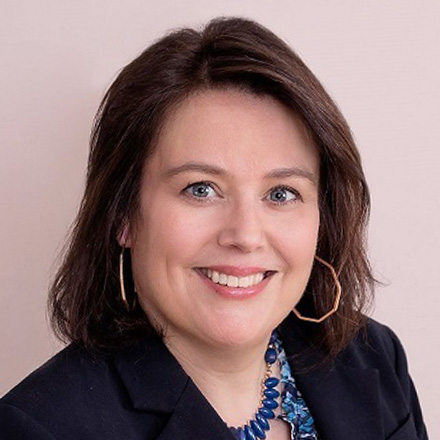
- Title Senior Vice President and Head of Vaccine R&D, Pfizer
Annaliesa Anderson: Going from bacteria to vaccines, Annaliesa Anderson shepherds Pfizer into RSV competition
Annaliesa Anderson helped steer Pfizer’s RSV vaccine efforts, setting the company up for success in a burgeoning market that’s caught a lot of attention. But she actually got her start in bacteria, not viruses.
Growing up in England, Anderson said there wasn’t much to do during summers off from school. But as a 12-year-old at her cousin’s house, she watched a TV show describing how people could use yeast to make human growth hormone and it just hooked her.
“I just thought that was the coolest thing,” Anderson said. “The fact that people think about bugs and organisms as things that are bad, but you could actually make them do things that were good. That was my first kind of, ‘Oh, this looks like something I’m interested in.’”
While yeast is technically a fungus, the TV program started Anderson on a path down learning about the ins and outs of microbiology. Her sense of direction led to, eventually, becoming the head of vaccine R&D at Pfizer, whose RSV shot Abrysvo exceeded sales expectations in 2023 with $890 million in its first season.
Originally interested in how bacteria and other microorganisms could help prevent pollution, Anderson shifted to biomedical research while doing her PhD, looking into how bacteria can make molecules that interact with other bacteria. The research helped lead to her first job at Merck, where she ran a lab tasked with finding new ways of making drugs from bacteria.
As she continued working with bacteria, however, she began developing more interest in the biology of drug discovery.
“What I noticed was, you’re there in your lab, making all these new molecules. But your molecule’s only interesting if it fits with a biological purpose,” Anderson said.
Soon, Anderson was asked to join Merck’s vaccines organization and found it a natural pairing. Even though she didn’t know much about vaccines at the time, her colleagues needed her expertise to understand how bacteria were causing certain infections. She said the experience of pointing the team to the right target antigen helped her realize she enjoyed being able to apply her knowledge to a more hands-on environment.
“It fit more with my sense of curiosity and problem solving, because ultimately, what is science?” Anderson said. “It’s solving problems, and that’s what I like to do.”
Anderson stayed at Merck for nearly 10 years, mainly in the early-phase space, before moving to Pfizer, where she worked on the Prevnar pneumococcal, meningitis B and C. difficile vaccines. She didn’t move to viruses until the Covid-19 pandemic.
When her boss who had recruited her to Pfizer, Kathrin Jansen, announced her retirement, Anderson inherited the vaccines leadership position and began overseeing RSV work. Following its strong first season, Abrysvo is expected to continue to compete with GSK’s Arexvy and Moderna’s mResvia as the companies look to expand their labels into younger populations and for use during pregnancy.
When it comes to improving gender balance in the workplace, Anderson said the struggles biopharma faces are similar to most other industries. She began to notice it more, especially as she continued ascending through the ranks, noting that at universities, the gender split in biological science degrees is roughly 50-50. The same is true for many entry-level jobs at Pfizer, she said.
But her biggest piece of advice for women who want to pursue careers in biopharma is to not let other people define who you are.
“Most people, especially women, often bring more to the table than they realize. And so I think that that’s an important lesson,” Anderson said. — Max Gelman

- Title Chief Medical Officer, Comanche Bio
Allison August: Comanche Bio CMO eyes long-awaited treatment for pregnancy condition
Allison August knew she wanted to make a difference.
“I grew up in a household where the ethos was you had a responsibility in repairing the world a little,” she said.
August carried that motto with her, from 20 years in gynecology and obstetrics to her work on Moderna’s Phase 3 trials for a Covid-19 vaccine during the global pandemic. Yet throughout her vast and varied career, one condition kept cropping up: preeclampsia, a form of high blood pressure in pregnant women that can lead to premature birth.
Her interest was sparked during her medical studies at the University of Chicago. The school building has five plaques for physicians in women’s health. Four are filled, but the fifth is left blank and is dedicated to a future scientist who develops a cure for preeclampsia.
During her work as a gynecologist, August routinely diagnosed women, in some cases who were 30 weeks pregnant or earlier.
“Obstetrics and gynecology has been a field where there has been potentially less true innovation,” August said. “If you look at the way that preeclamptic patients are managed today, as compared with 100 years ago, it really hasn’t changed.”
Fast forward two decades, and she is now fully focused on developing a treatment for preterm preeclampsia in her role at Comanche Biopharma.
The company won the FDA’s fast track designation last August for its Phase 1 lead candidate, an siRNA investigational drug injected into patients.
“That’s really what drew me to Comanche, is that we know that there are several approved siRNA-based therapeutics. But part of what’s unique here is that this asset is targeted and specifically delivered to the placenta,” August said.
August also hopes Comanche will be a template and a model for how clinical studies should be conducted in pregnant women. She said researchers should be mindful of the pregnant individual as well as the fetus.
It’s a major unmet need, August said. Globally, preeclampsia causes around 80,000 maternal and more than 500,000 fetal and newborn deaths each year. Mortality rates due to preeclampsia in maternal women are rising in the US, she said, in part due to rising rates of general hypertension and diabetes, which can go hand in hand with preeclampsia.
August describes her work as a “full circle” moment after starting her career as an obstetrician gynecologist.
“There’s no shortage of issues that need to be addressed. It really needs to be rooted in that basic science. I think that’s what differentiates Comanche; they get how powerful this potentially can be,” she said. — Anna Brown
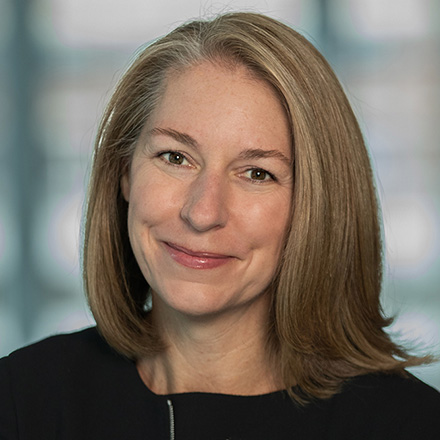
- Title Executive VP, Biopharma R&D, AstraZeneca
Sharon Barr: AstraZeneca’s biopharma head on applying lessons from rare disease to chronic disease
Sharon Barr always wanted her science to lead to new medicines.
She kicked off her career as a postdoctoral fellow in molecular pharmacology at Stanford University, but later realized that she might be able to reach her goal faster in the pharmaceutical industry.
“The timeline would be very compressed,” she told Endpoints News.
In 2005, Barr landed her “dream job” as a research scientist at the biotech company OSI Pharmaceuticals, which had an EGFR kinase inhibitor on the market for non-small cell lung cancer dubbed Tarceva. The company didn’t know where to take the drug next, and it was up to Barr and a handful of other scientists to form a translational research team and find out.
During this period, Barr said she was learning about how drugs are created, what questions have to be asked and answered during their development, and the unknowns that remain once they’re in the clinic. Astellas acquired OSI in 2010, and Barr remained at the company’s oncology unit for almost a decade.
Then, in 2013, she found herself at a “career juncture,” with several job opportunities in oncology and one in a completely different area: rare diseases.
“I thought, ‘If I go work in rare disease, I’m going to have to learn new modalities, build a new network, learn new pathways, completely reboot my understanding of biology,’” Barr said. “That sounds really hard, so I think I want to do it.”
Barr joined Alexion Pharmaceuticals in July of that year, starting off as a director in translational medicine and cycling through various roles over a period of eight years. There, she gained a deeper understanding of how to tailor R&D to the needs of specific disease communities after meeting patients with fibrodysplasia ossificans progressiva, a debilitating neuromuscular condition in which muscle tissue and connective tissue gradually ossify to bone.
“They might care more about upper body strength than they do about the six-minute walk test, because they want to be able to feed themselves more than they want to be able to walk downstairs,” Barr said. “It changed the way I think about creating new medicines.”
In 2021, AstraZeneca snapped up Alexion for $39 billion, and Barr was heading up the UK drugmaker’s biopharmaceuticals R&D unit just two years later. Now, she applies the learnings from rare diseases to much larger, more chronic conditions, spanning therapeutic areas from cardiometabolic to immunology. She is one member of a team of senior executives who report to CEO Pascal Soriot, alongside executive vice president of oncology R&D Susan Galbraith.
At AstraZeneca, Barr is keen on expanding the company’s capabilities in immunology with the help of its $1 billion acquisition of China-US cell therapy company Gracell Biotechnologies. The deal brought in a BCMA- and CD19-targeting CAR-T therapy called AZD-0120. In an investigator-initiated lupus trial, the candidate achieved “extremely” promising Systemic Lupus Erythematosus Disease Activity Index scores, returning patients’ scores to baseline, she said.
Barr is also “super-excited” about an upcoming cardiomyopathy readout for the company’s Ionis-partnered ligand-conjugated antisense oligonucleotide drug Wainua, which is approved for polyneuropathy associated with hereditary transthyretin-mediated amyloidosis.
“We have the chance to offer patients a medicine that changes the outcome of their disease, and I’m thrilled to pieces about that,” she said. — Ayisha Sharma
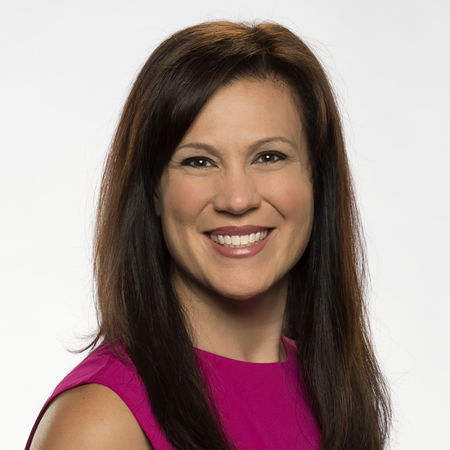
- Title Head of Oncology at Roche Pharma Research and Early Development
Johanna Bendell: Picking drugs for cancer patients of the future
In her years as a practicing oncologist and clinical trial investigator, Johanna Bendell has seen and cared for thousands of patients. But these days, she pushes herself to think of ones she has never met.
“Who’s the cancer patient of the future? I say this to my folks all the time, especially in discovery,” she said. “Because when we start in discovery, we’re going to make a molecule for patients 10 years from now.”
Discovery was a new area for Bendell when she joined Roche in 2021. Before joining the company to head up oncology for its pharma research and early development group, or pRED, Bendell spent 13 years at Sarah Cannon Research Institute in Tennessee, where she led hundreds of clinical trials while thinking of new ways to design them and bring them to patients.
She believes that the experience of being in the room with patients gave her a unique perspective as she spearheaded a strategy revamp at one of the world’s largest cancer drugmakers — with the goal of diversifying the early-stage portfolio but also focusing on areas pRED is best positioned in.
When Bendell first arrived at Roche, for instance, cancer immunotherapies took up 80% to 90% of the pipeline following the checkpoint boom. Today, she counts a 50/50 split between immunotherapies and what she calls “cancer cell dependencies” — treatments that hit cancers in vulnerable spots such as transcription factors and through synthetic lethality.
Building on Roche’s historic expertise on T cell bispecifics, her team is “aggressively chasing down” a combination of the CD20-directed drug glofitamab with a targeted co-stimulator that showed early promise as an off-the-shelf replacement for CAR-T therapy. The group is also exploring new extracellular cancer cell surface targets, which could bolster the development of antibody-drug conjugates and radioligands down the road, she said.
Those changes she spearheaded at pRED coincided with a broader prioritization exercise at Roche, including a separate decision by Bendell’s counterparts at gRED — the R&D unit at Roche’s Genentech — to dissolve its cancer immunology group and integrate it into the larger oncology unit.
While stopping the development of molecules is always a tough decision, Bendell considers them necessary to maximize patient impact. That pursuit for efficiency, after all, was what pushed her to move from academia to a community-based research center before joining pharma.
Being efficient, though, doesn’t mean never slowing down. Bendell recalls being scared of taking three months off when she was pregnant with her second child. It was Sarah Cannon’s president, Skip Burris, who reassured her that maternity leave will be “a blink in your professional timeline.”
“That always made me feel so safe,” she said. At pRED, she is now a sponsor for the women’s network. “To be able to now say that to other women in the organization, ‘We’re going to be there. We’re going to help you through it […] that’s great.”
There will always be more to do with Roche’s push for R&D excellence. For Bendell, that means also reflecting on how various groups are operating together. In oncology, she champions “seamless” drug development by ensuring that her team of 280 in discovery and early clinical development is in regular conversation with those in late-stage development. The former needs to know who the patients are and what options they already have, especially in a rapidly changing field; the latter could benefit from understanding how the science is evolving and what could be possible.
“Being able to translate those two languages to each other [is] going to be key to coming up with what’s next and what’s best,” she said. — Amber Tong
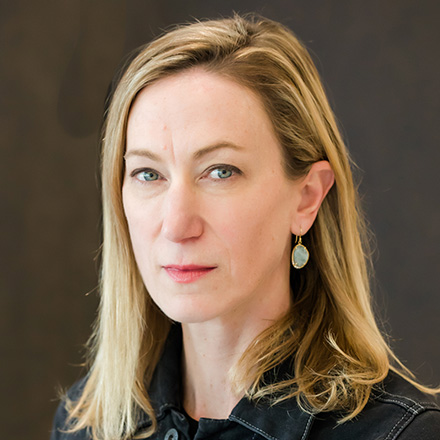
- Title Managing Director, ARCH Venture Partners
Kristina Burow: ARCH managing director enjoys ‘every single minute’ of building the blueprint for biotechs
Behind one of the biggest names in biotech startup investing of the past quarter-century is Kristina Burow, a managing director at ARCH Venture Partners, a firm that’s seemingly attached to nearly every large bet in the fickle world of drug development.
The former UC Berkeley swimmer quickly found her lane once entering the biopharma field, first working at the Genomics Institute at the Novartis Research Foundation, then moving over to the Swiss giant’s venture fund in San Diego around the turn of the millennium. A few years later, she took a role at ARCH, an investment apparatus in operation since its late-’80s founding in Chicago.
“This will surprise no one who knows Bob Nelsen, but I had an open invitation to hang out and do cool shit at ARCH. So that’s what I did,” Burow told Endpoints News. She moved to Chicago, worked for ARCH while getting her MBA and then opened up the firm’s office in San Francisco, where she stayed until the pandemic.
Burow has played a role in the firm’s go-big-or-go-home bets on infectious disease at Vir Biotechnology (that company is shape-shifting now), in neuroscience at Neumora Therapeutics (expect a crucial Phase 3 readout for a new type of major depression drug in the coming quarters) and now in obesity at Metsera (a partnership with former Medicines Company executives).
Her imprint is also found in the dark genome at Rome Therapeutics, in RNA medicines at Orbital Therapeutics, in mitochondrial biology at Pretzel Therapeutics and in oncology at Boundless Bio, which was part of a small cohort of biotech startups to go public earlier this year.
The list goes on. She said each new build starts with three key questions: What’s the mission? Who’s going to lead the daily grind? And what’s the likelihood of success? Each of those come with a laundry list of subquestions.
When she entered the biotech investing world nearly 30 years ago, the pace of company creation paled in comparison to today’s momentum, at least at ARCH, which has some of the industry’s biggest pockets.
“Every company seemed to take 15 years to build, and now I think the biotech industry has gotten much faster at taking innovation, putting it on the train tracks and creating therapeutics that drive patient outcomes but also tend to drive mergers and acquisitions and IPO outcomes,” Burow said.
That longevity gives Burow little to no pause when thinking about the state of the biotech financing scene over the past few years. She and the ARCH team have seen it again and again.
“We are not letting the external environment dictate what types of companies we’re going to build or what types of science or entrepreneurs we’re going to back,” she said.
And creating biotech startups might not be as hard as helping start new Montessori schools in San Francisco, which the mother of three has also done.
“They’re very similar. There is a lot of regulation in preschools in San Francisco. I can tell you that,” Burow said with a chuckle. “It requires a lot of capital, so there are some very distinct similarities. And it all comes down to the teacher, which is like the CEO.”
Setting up schools and forming the blueprint for biotechs: It’s all one big experiment. And Burow said she has “enjoyed every single minute.” — Kyle LaHucik


- Titles: Karin Conde-Knape: Senior VP, Global Drug Discovery, Novo Nordisk; Anna Windle: Senior VP, NAO Clinical Development, Medical and Regulatory Affairs, Novo Nordisk
Anna Windle and Karin Conde-Knape: Wegovy work from the US to the global stage
Karin Conde-Knape and Anna Windle watched Novo Nordisk’s weight loss drug Wegovy take off from two different perspectives: Conde-Knape from a global drug discovery role, and Windle from a clinical development and regulatory focus in North America.
Now they’re interested in what the drug can do outside of weight loss and diabetes.
Windle joined Novo Nordisk in 2011 in medical affairs, roughly six years before semaglutide won its first approval in diabetes as Ozempic. The company was already developing the GLP-1 receptor agonist at the time, and upon reviewing the data, the team realized they had something “pretty amazing.”
Semaglutide was approved in 2017 as Ozempic for diabetes. In 2021, it became the first drug approved for chronic weight management, a landmark moment for the obesity field. The treatment, marketed as Wegovy, generated more than $915 million in 2022, its first full year on the market.
“But I would say probably the big turning point was essentially when we actually got the readouts of the cardiovascular data,” Windle said.
In the SELECT trial, Wegovy reduced patients’ risk of major adverse cardiovascular events by 20% compared to placebo, leading to a label expansion in March.
“I was so proud of us, actually, for that trial,” Windle said. “People were leaving the obesity field, and Novo decided that we would commit to it and we would stay in it.”
Windle’s current role involves leading clinical development for North America across all therapeutic areas, as well as leading regulatory interactions with the FDA. Her team spends a lot of time understanding what patients’ unmet needs are — and planning semaglutide’s next steps.
The drug is in clinical trials for a variety of conditions, including Alzheimer’s and a liver disease called MASH.
As senior vice president of global drug discovery, Conde-Knape also thinks about “continuing to build the journey around GLP-1.”
Conde-Knape joined Novo in 2018, first focused on cardiovascular and liver diseases and then eventually diabetes and kidney disease as well as building a translational team. She said it was clear early on that the GLP-1 mechanism had “the potential to deliver more.”
Looking to the future, Conde-Knape sees a saturated GLP-1 space, including double and triple agonists, similar to the PDL-1 space for cancer. She sees the next generation of molecules as “quite critical,” as well as considering subgroups of patients in the obesity community who have comorbidities.
“What else do you bring in the understanding of disease and biology so that you can actually impact multiple organs that go beyond weight loss? That is, for me, what is going to be the change,” she said. — Katherine Lewin

- Title Executive VP, Oncology R&D, AstraZeneca
Susan Galbraith: How AstraZeneca’s oncology head charted a path in precision medicine
Susan Galbraith fell into oncology by chance.
As a junior doctor, she had wanted to specialize in cardiology, but ended up on a rotation that included oncology at Addenbrooke’s Hospital in the UK. She found herself enjoying the long-term contact with cancer patients and their families, and nurtured a growing interest in the mechanisms behind cancer and its treatment.
At the turn of the century, Galbraith followed that interest even further and pursued a PhD focused on a vascular-targeting agent for cancer owned by a small biotech company. The compound was later licensed by Bristol Myers Squibb, with a job opportunity at the US drugmaker following soon after.
“It came at a convenient time in my career — I’d always been interested in working in a different country for a period of time and it was just before I would have been applying for consultant roles in the NHS,” she told Endpoints News.
With her husband and two young children in tow, Galbraith made the trip across the Atlantic, only to learn two weeks after her arrival that Bristol Myers had killed the drug.
“That was a lesson about burning bridges,” she said. “I had no choice but to make it work at that point.”
After chatting with staff at Bristol Myers’ discovery lab, Galbraith became interested in the then-nascent field of immunotherapy. While attending a small conference in New York, she came across a presentation on Phase 1 data for a monoclonal antibody drug targeting CTLA-4. Impressed by the results, she initiated the in-licensing of that drug by Bristol Myers.
Now better known by its brand name Yervoy, the drug generated $1.38 billion in sales last year.
“I probably wouldn’t have been so focused on the potential of immuno-oncology if they hadn’t killed the drug I’d originally worked on,” Galbraith said. “It’s like one door closes and another opens, but you’ve got to be willing to take the risk and walk through that door.”
Nine years into her time at Bristol Myers in the US, Galbraith got a call from AstraZeneca. “It was probably the only job back in the UK that I would have been interested in doing, with a company that had its discovery and early development group focused there,” she said.
When Galbraith joined AstraZeneca in 2010, its PARP inhibitor olaparib was at a crossroads. The company had reformulated the drug from a capsule to a tablet, but was struggling to achieve bioequivalence. Olaparib had also completed a Phase 2 test in second-line platinum-sensitive relapsed ovarian cancer, showing improved progression-free survival, but there was “not yet a trend to overall survival,” Galbraith said.
Galbraith, however, noticed a “remarkably large” effect size in a subset of patients with BRCA mutations. “We’re not even sure we’ve got a formulation that could go forward, and we’re wanting to spend more money to test biomarkers in this trial — somebody told me that I was proposing to throw good money after bad,” she said.
But with the support of Pascal Soriot, who was named CEO in 2012, Galbraith managed to secure the funds to look further into olaparib’s potential. The drug’s approval in 2014 was a “turning point” for AstraZeneca’s oncology group and helped drive a change in its philosophy. Now marketed as Lynparza, olaparib made $2.81 billion in sales last year.
Galbraith is now one member of a team of senior executives who report to Soriot, alongside executive vice president of biopharmaceuticals R&D Sharon Barr.
In recent years, AstraZeneca has made a point of diversifying its oncology pipeline. In December, the drugmaker entered the CAR-T field with a $1 billion deal to acquire China-US cell therapy company Gracell Biotechnologies. In March, it struck a deal for $2 billion upfront to buy Fusion Pharmaceuticals, joining the increasingly popular radiopharmaceuticals field. These deals added to ongoing work on antibody-drug conjugates in collaboration with Japan’s Daiichi Sankyo.
While some have questioned whether the company is spreading itself too thin, Galbraith said there’s a method to the approach. “The idea is we’ve got to have a diverse set of mechanisms that we can put together in effective combinations,” she said.
For instance, radio conjugates could supplement or replace some parts of the way radiotherapy is given, while cell therapies could help broaden the potential reach of immunotherapies to areas where immune checkpoint inhibitors on their own haven’t been as effective, Galbraith said.
That all comes along with the company’s efforts to boost early screening and diagnosis of cancer with the help of tools such as AI, and with its expansion into the digital health space. It builds on the lessons she learned at Bristol Myers — being receptive to other doors opening in case one closes.
“I think we have something that’s differentiated from what many companies are offering,” Galbraith said. — Ayisha Sharma

- Title VP and Chief Diversity Officer, Genentech
Quita Highsmith: Genentech’s first chief diversity officer on being a ‘changemaker’
Quita Highsmith was putting together a summit in 2017 for Genentech employees to learn from patients who had participated in the company’s clinical research.
But she was having a hard time finding Black or Hispanic patients to engage, because their representation was so disproportionate.
The episode drove Highsmith and a co-worker to found the Advancing Inclusive Research initiative at Genentech to recruit more representative populations into clinical research. After narrowing down locations specific to certain diseases and research areas such as oncology, she would pick cities like Memphis, San Antonio, Los Angeles and others where the community around them has a population that’s representative of those most affected by each condition.
Under the initiative, Genentech’s participating oncology sites enrolled 89% more Black and Hispanic patients than other sites on the same studies, the biotech said. Genentech also launched what it says was the first trial to assess disease activity and biomarkers in Black and Hispanic patients with relapsing multiple sclerosis, and submitted 20 diversity action plans out of a total of 76 plans turned in to the FDA across the biopharma industry last year.
It was the perfect segue into her current role as Genentech’s first chief diversity officer in the 48-year history of the biotech. Highsmith reached out to HBCUs to fund schooling for underprivileged students who want to pursue PhDs to become scientists. She pushed for diversity in Genentech’s suppliers, seeking out businesses owned by veterans, individuals with disabilities or women.
It’s rewarding but tough to have to wear so many hats in her role, Highsmith said.
“Just to be a chief diversity officer, here’s what you are: You are a changemaker, you are an advocate, you are an advisor, you are an educator, you’re a truth teller, you bring in the data,” she said. “And lastly, you are a therapist to the entire company because everybody wants to talk about their issues.” — Ngai Yeung
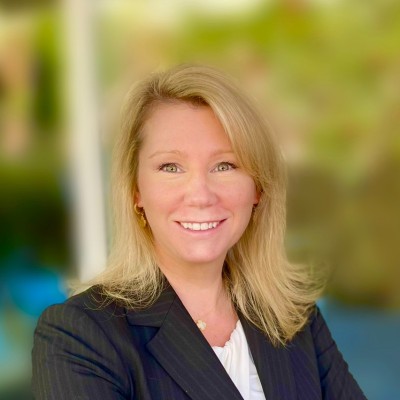
- Title Chief Medical Officer, Travere Therapeutics
Jula Inrig: Travere’s CMO reflects on the importance of collaboration
When Travere Therapeutics’ chief medical officer Jula Inrig came aboard in 2022 to help develop and guide two rare disease kidney trials, she brought tons of experience with her, having already run more than 50 clinical trials across dozens of countries.
That extensive experience has led her to stress the importance of collaboration.
“Collaboration has been the biggest key driver to change and success,” Inrig told Endpoints News. “It often takes many years to move the field forward as it takes a village, and many stakeholders work in silos.”
She offered one collaborative example with the Kidney Health Initiative, which is a partnership involving the FDA, the American Society of Nephrology, academics and industry that defined endpoints for diseases such as IGA nephropathy, a kidney disorder.
Ten years ago, there were no FDA-approved drugs for IGA nephropathy, “and now we have three new FDA-approved therapies (including one we got approved) and 10+ in development,” Inrig, a former global head of the Renal Center of Excellence at IQVIA, noted.
Regarding her experience as a woman in a male-dominant biotech world, Inrig said things have changed, particularly in the last five years as companies look to more diversity.
“I was very intentional in where I worked, and I try to commit to gender equity and also working to ensure the next generation has a similar experience to me. That means mentoring and giving time to professional societies which focus on gender equality,” she said.
As far as advice for women who are debating whether to move into the biopharma industry, Inrig said, “Do your research, make sure you are well informed at all levels about who you are working for (the science, the corporate priorities, the culture), and who your peers are as you will be in the trenches with them! Culture is critical and can make or break you.”
On the benefits of moving from academia to industry, Inrig added that academia “can be very siloed and the ability to make an impact can sometimes be limited to n=1 or n=100,” whereas working on a collective goal such as a new drug approval “can be personally rewarding and impactful on a much larger scale,” she said. — Zachary Brennan
Editor’s Note: A correction has been made to reflect that Jula Inrig joined Travere in 2022.

- Title VP, Head of Data, AI & Genome Sciences, Merck
Iya Khalil: Bringing the oncology playbook — powered by AI — to fuel Merck’s pipeline
Iya Khalil has a different perspective than most on Merck’s recent $10.8 billion purchase of Prometheus Biosciences.
For many Wall Street analysts and investors, the deal looks like a move to replace revenue from Keytruda with a potential immunology blockbuster in a TL1A blocker now called MK-7240.
But for Khalil, who joined Merck in 2023 as vice president and head of data, AI, and genome sciences, that TL1A program is just one example of an even bigger trend defining Merck’s future. Khalil’s team is building disease foundation models, hoping to uncover new therapeutic targets as well as finding precision biomarkers to help learn which patients are most likely to respond to a drug.
Patients who enroll in Merck’s late-stage studies for MK-7240 will also have a mix of genetic and -omics profiling, both pre-treatment and post-treatment. All those data are fed into AI models her team is building to model and simulate diseases. The goal is these foundation models could then be fine-tuned to simulate specific scenarios to help researchers make decisions on what disease or types of patients may be most likely to benefit from a drug.
Khalil has been working in the computational biology space since 2000, when she co-founded a startup called GNS (recently named Aitia). After two decades there, she left to run an AI lab at Novartis before jumping to Merck last year.
“We are in build mode,” Khalil said. “As far as I can tell, it looks very promising.”
Khalil’s team of over 100 people is helping turn ambitious ideas like foundation models of biology into reality across Merck’s research in immunology, neuroscience, oncology and cardiometabolic disease.
“We’re at a point where we can now do this,” she said. “It was prohibitive a while back” for reasons like the quality of the biological data and challenges in capturing this data while maintaining the trial’s integrity. “We’re at the convergence of 2024, where these things can truly come together.”
The work is early, but Khalil said there are multiple reasons to believe now is the opportune time for these models to be successful. Patient data have become cheaper and more detailed. New AI models allow better ways for computers to process different types of biological data. And compute power has gotten significantly better, allowing these models to be trained.
“Instead of learning the language of words with ChatGPT, can it learn the language of genetics, genomics, proteomics, imaging and how that impacts a cell phenotype?” Khalil said. “It’s a massive effort, both in terms of the data we’re collecting and generating to train them, as well as the compute power.” — Andrew Dunn
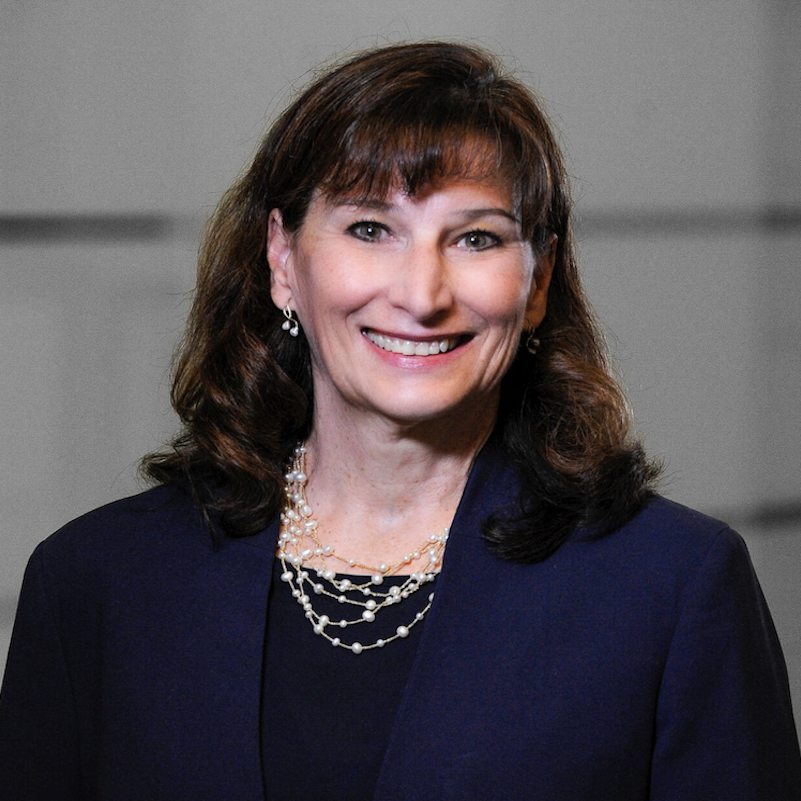
- Title Chief Development Officer, Coherus BioSciences
Theresa LaVallee: When the ninth PD-1 also marked a historic first
Theresa LaVallee is used to running projects that everybody says couldn’t be done — or wouldn’t think to do.
She was the first translational medicine employee at AstraZeneca’s MedImmune, watching them take on the bold challenge of developing an antibody for RSV and exploring checkpoint inhibition before immuno-oncology took off. A couple of executive jobs later, she moved across the country to join “this wacky idea” that was the Parker Institute for Cancer Immunotherapy, where she led collaborative research projects to run experiments that pharma companies wouldn’t.
“A couple of people asked me if I was having a life crisis,” she said.
So when Coherus BioSciences, a company mostly known for its biosimilars, called about steering a made-in-China PD-1 drug to a historic FDA approval in the middle of a pandemic, she took the opportunity.
When LaVallee first joined Coherus, the perception was that the agency had an open-arms attitude toward drugs tested and developed exclusively in China. But soon after, the agency made clear — through a rejection of Eli Lilly and Innovent’s drug — that China-only data are not going to cut it.
But even with some confusion about the FDA’s viewpoint on China-only data, and after a manufacturing-related rejection, it happened: In October 2023, California-based Coherus and its partner Junshi brought the ninth PD-(L)1 inhibitor onto the US market. The FDA greenlit toripalimab — a particularly impressive feat for her “little teeny” regulatory team of six.
“Getting toripalimab approved was by far the biggest hurdle — the hardest thing I’ve ever done,” said LaVallee, who’s now chief development officer at the biotech. “People really didn’t believe it was going to happen.”
Coherus and Junshi managed to pull off the exception that proved the rule by focusing on nasopharyngeal carcinoma, a cancer type that’s particularly prevalent in East Asian populations and rare in the US.
They were also successful because they were able to find solutions when China imposed severe travel restrictions related to Covid, physically barring FDA inspectors from reaching the contract research or manufacturing sites involved in producing the drug. By 2023, those inspections were the only thing holding up the approval.
“We looked at some very creative approaches collaborating with other companies that were in similar situations,” LaVallee said, including asking the FDA to consider setting up a “bubble” for personnel, like in the Olympics.
It didn’t come to that, and China eventually lifted all restrictions. And that “almost was a bigger problem,” she said, because the FDA now had an entire backlog to go through. But with her constant contact with the agency or even luck — LaVallee herself wasn’t quite sure which ended up the deciding factor — the drug ended up being the FDA’s second inspection once the agency entered China.
With a PD-1 backbone in its portfolio, Coherus is exploring partnerships to fund combination studies while testing other early-stage candidates as it looks to establish itself in immuno-oncology. The company is still open to working with Chinese biotechs with scientific merits — it will just have to be vigilant about the evolving geopolitical concerns.
“We are moving the manufacturing of toripalimab to the United States,” LaVallee said. “I don’t want to have to worry about traveling to China again.” — Amber Tong

- Title Co-founder of Aspen Neuroscience; Professor Emeritus, Scripps Research; Senior Scientific Advisor to the National Stem Cell Foundation
Jeanne Loring: After years of pioneering stem cell work, a notable researcher pushes for a breakthrough
Jeanne Loring, who has been called the godmother of stem cells, is watching her decadeslong research reach a pivotal juncture.
Her tenacity produced, perhaps most notably, a potential Parkinson’s treatment that started a clinical trial earlier this year. The milestone follows years of setbacks in the stem cell field, and more broadly, Parkinson’s drug development.
“A plan I put in place a long time ago is working,” said Loring, founding director of the Center for Regenerative Medicine at Scripps Research.
Her work with stem cells has run the gamut and extended to areas that might seem more science fiction than reality: from reviving the northern white rhinoceros population to studying cells in space. Her pursuits were the subject of an in-depth Endpoints News profile last year.
Loring’s next big frontier: potentially treating brain conditions.
She co-founded Aspen Neuroscience in 2018 and helped raise $220 million to try a personalized approach to Parkinson’s. The company creates therapies using a patient’s own cells, which is known as an autologous therapy.
The clinical trial is looking to see if, once injected, these cells can mature into dopamine-producing neurons. In patients with Parkinson’s, neurons die, causing stiffness, tremors and anxiety, among other symptoms.
Patients currently have limited options. Longtime Parkinson’s treatment levodopa has limited effects and wears off over time.
A competitor, BlueRock Therapeutics, is in clinical trials with a similar therapy, but one that’s based on donor cells. To prevent the body from rejecting the medicine, patients must take immunosuppressive drugs that can weaken the body’s defenses.
Because of Aspen’s personalized approach, the industry is closely watching its clinical trial. But Loring doesn’t see it as an either/or. In June, Loring and co-authors wrote in the journal Stem Cells that competition shouldn’t take precedence over collaboration — one of her key philosophies.
Aspen, BlueRock and other organizations are part of a global partnership called G-Force PD to share data on stem cell therapies.
“This field is too challenging for competition to be the main goal; there are so many people suffering from Parkinson’s disease that there should be room for multiple approaches to succeed,” Loring and others wrote in the paper.
Multiple companies pursuing stem cell treatment for Parkinson’s seemed like a far-off possibility early in Loring’s career. At that time, she ran into difficulties putting stem cells to work because she struggled to get funding. Her advice to women encountering similar barriers?
“When funders say ‘no,’ ask them why, and then have them explain it, and then tell them why they’re wrong,” Loring said. But, she cautioned, not every investor welcomes such directness.
“The path I’ve taken has probably alienated just as many people as I’ve won over because I’m very straightforward,” she said.
Nonetheless, she’s learned how to speak the language of both academia and industry, moving back and forth between the two realms throughout her career.
“You really do have to change the way you talk to people, the way you interact with people, and remarkably, it has been a lot of fun,” Loring said. — Jared Whitlock
Editor’s note: An earlier version of this article misidentified the company that Loring co-founded. It is Aspen Neuroscience, not Aspen Bioscience.
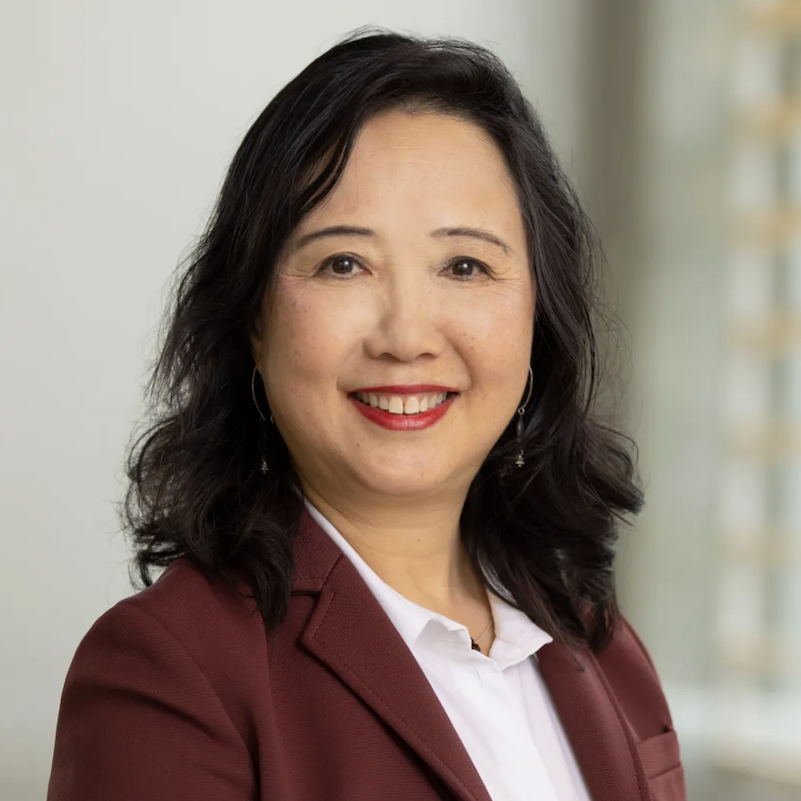
- Title Senior Vice President, Biotechnology Research, Lilly Research Labs
Jirong Lu: The protein biochemist behind Lilly’s biggest antibody drugs
There’s a lot of behind-the-scenes work that goes into turning a promising antibody into a bona fide drug candidate. Jirong Lu is the chemist responsible for fine-tuning some of Eli Lilly’s biggest antibody medicines, including the psoriasis drug Taltz and the recently-approved Alzheimer’s disease therapy Kisunla.
Lu grew up in rural China, where time spent outdoors fostered an appreciation for nature and a strong curiosity. Her parents never went to college, but a young high school chemistry teacher ignited her interest in the central science, which she then studied at Sichuan University.
Later, as she was wrapping up her postdoctoral research on proteins at the University of Washington in 1997, Lilly began hiring scientists for a new biotechnology research unit. When Lu saw an advertisement for the Indianapolis drugmaker’s initiative while flipping through a science magazine, she immediately knew it was “like a dream job.”
This was a big turning point for Lilly, best known then for making insulin and Prozac. Protein therapies were cutting-edge science, and Lu loved the group’s mantra that “your body doesn’t make the protein to be used as a therapeutic,” she said. Natural proteins needed to be engineered and optimized to do their job. It was chemistry, but with molecules whose size and complexity dwarfed the compounds found in pills.
Lu became fast friends with biologist Ling Liu, another newcomer to Lilly who also studied at Sichuan University. The duo worked on a mysterious immune protein now known as IL-17. Liu discovered that it caused inflammation, and Lu created an antibody that could block it.
Making antibodies was still a laborious task in the early 2000s. Lu had to immunize mice with the IL-17 protein, collect their antibodies, test them to find the best ones, rework the mouse antibodies to make them look like human ones, and then optimize those molecules to make sure they were soluble and stable. All told, it could take three to five years, Lu said.
When antibody optimization fails, programs are often canned before investors ever hear about them. And when they succeed, the focus quickly shifts to clinical tests. The vital work that scientists like Lu do rarely reaches the public limelight.
The IL-17 antibody was initially tested in rheumatoid arthritis, with lackluster results, but its ability to clear skin plaques in people with psoriasis was dramatic. The antibody was first approved in 2016 and is now marketed as Taltz. It’s among Lilly’s biggest sellers, earning the company more than $2.7 billion last year.
Lu also played a key role in multiple Alzheimer’s programs, planting the seeds for Lilly’s eventual success after several failures.
It all started when Lilly neuroscientist Ron DeMattos identified a particular part of the infamous amyloid plaques that he wanted to target. Antibody engineer Ying Tang worked nights and weekends to find an antibody that could do the job. After identifying a promising lead, Lu steered a full-blown effort to improve its affinity. Humanizing the antibody was tricky, and initially resulted in a weaker molecule that was quickly cleared from the body. But additional chemical tweaks saved the drug.
That antibody, called donanemab, is now sold as Kisunla. It’s unclear if it will be the big blockbuster that Lilly and others always imagined an Alzheimer’s drug would be. But Lilly already has sequels in the works. Remternetug, another amyloid-busting antibody that Lu helped design, is given as a simple injection rather than a lengthy infusion. It’s being tested in Phase 3 trials now.
More recently, Lu has helped push Lilly’s “10-year journey” to design antibody and protein therapies that penetrate the blood-brain barrier, the protective shield that keeps most drugs out of the brain — including most of donanemab. Lilly hasn’t talked much about this effort publicly, but Lu said the company is working toward testing it in the clinic.
Over the past few years, Lu has stepped back from the lab bench and taken on management roles at the company to guide its antibody and protein drug strategies. She also devotes a lot of time mentoring the next generation of scientists.
“I have really benefited from having great mentors at Lilly,” she said. “So I’m very passionate about trying to pay back, to give other scientists that opportunity.” — Ryan Cross

- Title VP, Head of Data Science, Bristol Myers Squibb
Mariann Micsinai-Balan: Moving from Wall Street to pharma to bring AI into R&D
Growing up east of the Iron Curtain in Hungary, Mariann Micsinai-Balan has always been comfortable with blending cultures, languages and ideas. That has led her to the cutting edge of R&D in pharma, tasked with bringing artificial intelligence technology to a legacy drug-making giant.
Before joining Bristol Myers Squibb in 2020, where she is now head of data science, Micsinai-Balan worked on Wall Street at Lehman Brothers and in the tech world at a startup then called Greenplum Software.
She’s picked up a few degrees along the way, including master’s degrees in computational biology, economics, international studies and international relations. She also earned a PhD in computational biology and is now completing an executive MBA program.
That eclectic academic journey included an elective class in statistical genomics, which got her hooked on biopharma.
“I’ve taken the long, nontraditional route to biopharma that ended up giving me a pretty good wealth of experience and an adaptive, flexible mindset,” Micsinai-Balan said.
That journey across disciplines has shaped her perspective on bringing data science and computer science into the drug R&D world. Her team at Bristol Myers isn’t focused on applying AI to one particular R&D task, but rather thinking across the entire process. For instance, she said early discovery insights can be integrated into later-stage development plans.
Data science is a team sport, Micsinai-Balan said, emphasizing the importance of getting buy-in across the company and working together, rather than operating as a siloed group. Micsinai-Balan’s team also has some diversity that is often lacking in AI circles. Two-thirds of her interns were women this year, she said, as are over a quarter of permanent team members. The team has a wide range of backgrounds, from astrophysics to computational biology to mathematics and more.
Micsinai-Balan said she advises her interns to stop doubting themselves. As her own career shows, in moving from Wall Street to the tech startup world to a drug-making giant, some professional boundaries on what’s doable are self-imposed, she said.
“Don’t be afraid of failing, because if you don’t explore, you close your chances of figuring out, ‘Hey, this might be a route,’” she said. — Andrew Dunn

- Title VP of Early Oncology R&D, AbbVie
Theo Ross: From med school to pharma, empathy is the through line of Ross’ career
Growing up, Theo Ross says she had “no interest in science.” Instead, she wanted to be a concert violinist or maybe a stand-up comic. She dropped out of high school, went to music school and chased her dreams.
Then she heard her brother, a renowned cellist, play in a recital. She came to a painfully clear realization: “‘Oh my God, I can never be this person, and this is who I want to be,’” she thought to herself. “So I quit.”
Decades later, scores of patients can be grateful that Ross put down the violin for the lab coat. Ross, an academic and oncologist at heart, has forayed into industry for the latest chapter of her career. She’s now the vice president of early oncology research & development at AbbVie after prior executive stints at Amgen and Merck.
After switching from music to medicine, Ross landed at Brigham and Women’s Hospital, where she worked under the tutelage of Marshall Wolf, the internal medicine residency director. Wolf is colloquially known as the “dean of medical residency program directors” and helped train more than 2,000 doctors, including more than 1,000 who became full-time professors at leading medical institutions.
Ross said that Wolf only allowed two people in the residency program from Harvard. The rest had to come from medical schools around the country.
“He was a guy who believed in diversity before people believed in diversity,” she said.
Wolf was at Ross’ wedding. And he stepped up for her in the clinic when she had to deal with a family emergency. His empathy became a blueprint for Ross who, despite her ascension, continues to see patients periodically, mainly for family or friends. She’s driven by the fact that just taking a moment out of her day to give some medical advice could extend someone’s life.
The empathy — and the power of diversity — came to the forefront while Ross worked at the University of Michigan. When her soon-to-be-hired lab manager told her she was pregnant, Ross didn’t bat an eye. Only upon reflection did she realize how novel that may have been to someone like that lab manager who was concerned about taking maternity leave in a field where men dominate leadership roles.
Ross next moved from Michigan to UT-Southwestern, where she led the Cancer Genetics Program and had a lab of her own. She investigated how certain genes impacted patients’ risk for cancer, including the relationship between BRCA1 and leukemia. In one of the early iterations of Ross’ lab, she went by “Snoop Dog,” because she was so hyper-vigilant of what everyone was working on that she’d check her researchers’ lab notebooks at night. When they’d come back to work the next day, Ross would be armed with questions.
“I learned that I was a micromanager, and I needed to work on that, and I have been working on it ever since,” she conceded.
Years later, a conversation with Roger Perlmutter, the former head of Merck Research Labs, inspired her jump to pharma. He offered her a job working in translational medicine — a sweet spot for physician-scientists — and Ross felt it was an opportunity she “had to take.” She spent almost two years at Merck before jumping to Amgen for a year.
In November 2022, Ross joined AbbVie as the VP of oncology early R&D, veering the company toward solid tumors with the acquisition of ImmunoGen. She’s also been able to hire new leaders on her team and “clean up” some of the early portfolio. Ross said she’s not concerned about moving quickly.
“We want to get our drugs to patients sooner,” she said. “And if we waste time on something that’s not working out, or it’s toxic or it’s not efficacious, that’s bad for patients.” — Max Bayer
Editor’s Note: An AbbVie spokesperson clarified that AbbVie had been working on solid tumors before the ImmunoGen acquisition.

- Title Chief Scientific Officer, Pioneering Medicines
Luisa Salter-Cid: Pharma veteran builds out Flagship’s in-house pipeline of new medicines
For three and a half years, Luisa Salter-Cid has been building out Flagship Pioneering’s in-house pipeline of new medicines.
She leads the scientific charge at Pioneering Medicines, where she brings together the R&D engines of the Boston-area incubator’s 40-plus startups and corrals three big partners: Novo Nordisk, Pfizer and the Cystic Fibrosis Foundation.
Salter-Cid is familiar with bridging teams. After working at the human genome research company Genset in the early 2000s, she moved to La Jolla Pharmaceutical and then spent about a dozen years at Bristol Myers Squibb. While at the large pharma, she helped integrate the Medarex team (which gave them what would become Yervoy), and eventually moved up to head of immuno-oncology small molecule work and scientific lead on Bristol Myers’ dealmaking.
“BMS at that time was probably one of the best drug discovery companies,” Salter-Cid said. She is particularly fond of the company’s TYK2 work, which led to the plaque psoriasis pill Sotyktu.
“One day we were told by high management, ‘Well, the IL-23 antibodies are already out there, so you need to come up with a small molecule that does the same thing,’” she recalled.
She then went to Gossamer Bio for a few years before landing at Pioneering Medicines in early 2021. Her team is working on experimental drugs for MASH, obesity, cystic fibrosis and other areas being kept under wraps. She hopes to give cystic fibrosis patients better treatments, as there’s “still a lot of drawbacks from the current therapies,” she said.
Salter-Cid enjoys overseeing a broad portfolio that goes beyond her longtime focus on immunology.
“You cannot avoid metabolics these days,” she said.
Cardiovascular has also become an area of interest for her lately. It’s probably the most different from immunology, she said.
“It really blows my mind a little bit, to be honest. I like my cells in a Petri dish that we can put together and see stuff happening. That’s not going to happen in cardiovascular,” Salter-Cid said with a laugh. — Kyle LaHucik
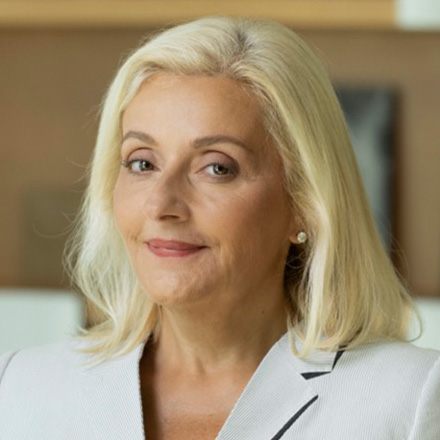
- Title Executive VP, Chief Regulatory and Quality Officer, Vertex Pharmaceuticals
Nia Tatsis: Vertex’s chief regulatory officer on how FDA is evolving
Nia Tatsis has been with Vertex Pharmaceuticals for seven years and was promoted to chief regulatory and quality officer in 2019. Tatsis is also a board member at cardiovascular disease gene editing company Verve Therapeutics. She was born in Athens, Greece, but immigrated with her family to the US outside of Philadelphia when she was a year old.
This interview has been edited substantially for length and clarity.
Lei Lei Wu: Part of your job involves working with the FDA, so I’m curious what your thoughts are on how the FDA is changing.
Nia Tatsis: There’s CDER [Center for Drug Evaluation and Research] and there’s CBER [Center for Biologics Evaluation and Research]. CDER always felt, when I started, like the most regimented. They knew exactly how they wanted things done, and what they wanted. CBER, when I started at vaccine [at Wyeth], they were open to just meeting with us a lot.
CBER now is a different beast altogether. Now, as we’ve all moved into biologics, they have to learn science very quickly. They have to make some really big decisions in the absence of having the ability to sit down with us and go through it, as much as I used to have the pleasure of doing, 10, 15, 20 years ago.
They’ve become much more like CDER. It’s a little bit more regimented.
Wu: You recently joined Verve’s board. How did that conversation come about, and what are your personal thoughts on what Verve is working on? I feel like people have very different opinions on doing gene editing for a very common disease.
Tatsis: Before I joined [Vertex], I did the anti-PCSK9 that Sanofi was developing with Regeneron — Praluent. I remember sitting and talking and listening to the patients that came through the advisory committee [for Praluent], and these folks have heart attacks. Those folks who have hypercholesterolemia, many don’t know they have it. It’s a silent disease. And it’s a really important disease.
I spoke to a recruiter like you normally do. Verve was one of the companies that kept coming up.
For the rare diseases that we’ve been working on, maybe it’s an easier way to think about CRISPR gene therapy. But science is going to evolve. And the way it’s going to evolve is it’s not always going to be a small molecule, it’s not always going to be a pill, and maybe a one-and-done is the way to go.
I think Verve has the right idea. I think their science is amazingly strong. I think their leadership is strong. Do you know Sek [Kathiresan]?
Wu: I’ve met him a couple times.
Tatsis: I think if you spend 10 minutes talking to Sek, you’re converted. It’s because of the passion he feels for what he’s doing and the deep knowledge that he has. So it wasn’t a hard decision at all.
Wu: What is your perspective on how the position of women in the industry has evolved or changed, if at all, since you’ve joined?
Tatsis: It’s evolved. First, I would say, Vertex does it so well: Reshma [Kewalramani] being the CEO. Before she was the CEO, she was prominently doing amazing work. [Former CEO] Jeff [Leiden] before Reshma was committed to ensuring that women are well-represented. If you look at our executive team, or if you look at our board, I think you’d see that.
But there are different ways different companies think about it.
One of the reasons I wanted to come to Vertex … There were women in leadership and everyone was treated pretty equally. I didn’t feel like I was a woman interviewing for a job. I just felt like I was another candidate — that really mattered. I don’t know that I always felt that way at other places. There wasn’t anything overt, but I felt like here it was not even a discussion.
I don’t know that other companies have evolved. I’m not there. But if you look across senior leaders — if I look at Sanofi, and I’m not saying it in a bad way, I don’t know who they have now, but when I was there — there really weren’t senior leaders who were women. There were a few.
Here, you can’t help but notice that we have a lot of strong and important women who have a lot to say and are really making changes. I get to learn watching them, and hopefully someone learns watching me. — Lei Lei Wu
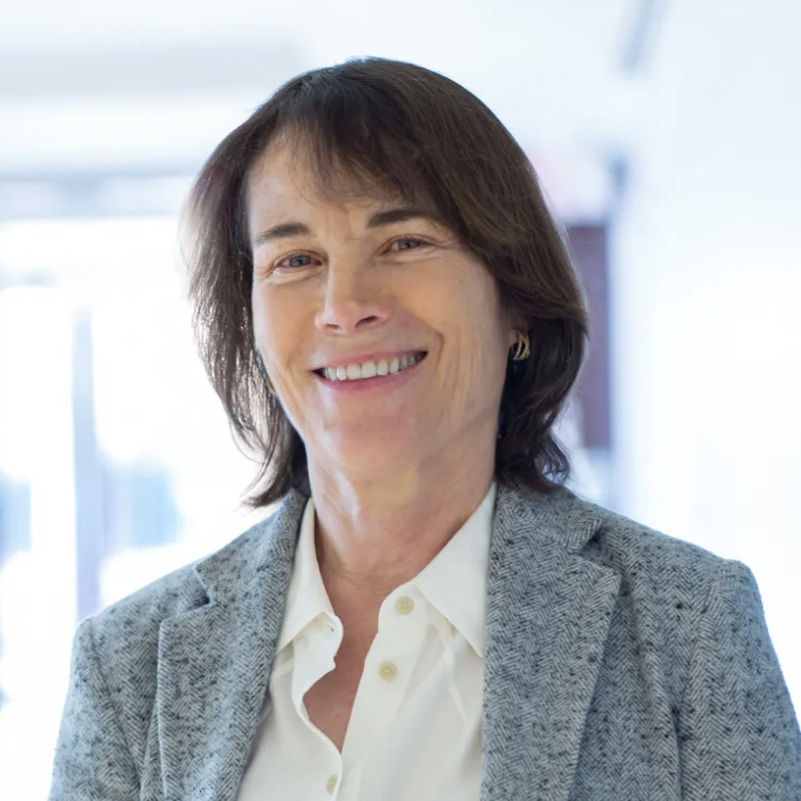
- Title Founder, Chief Medical Officer, President of R&D, Madrigal Pharmaceuticals
Becky Taub: How a ‘going-away present’ led to the first approval for a vexing liver disease
Scientists and clinicians didn’t quite understand the severity of a liver disease called nonalcoholic steatohepatitis (NASH) more than 20 years ago. But even then, Becky Taub knew it would be an important disease to treat.
Up to 5% of Americans are estimated to have NASH, a disease also referred to as metabolic dysfunction-associated steatohepatitis (MASH) that can progress to severe scarring or cirrhosis of the liver. For years, the standard of care was diet and exercise. Taub led a team of scientists at Madrigal Pharmaceuticals to the field’s first drug approval in March, a crucial milestone for patients.
The story starts with a shelved Roche candidate, an inopportune job offer and a valuable “going-away present.”
Taub left a position at the University of Pennsylvania in 2000 to pursue a career in the pharmaceutical industry. She landed at Roche in 2004, where resmetirom was discovered as a potential metabolic candidate for clinical development. But scientists had already written it off because when they dosed animals, they didn’t see very high levels of the molecule circulating in the blood.
“When I looked at it, I said, ‘Well, maybe that’s because it’s going to the liver,’” Taub said. “We had in the back of our minds that there was a fatty liver disease and it might be good for that.”
They also hypothesized that it would be good at lowering cholesterol and other lipids that cause heart disease. Taub and her team revisited the candidate, working on it for four years until Roche reorganized. The new job Roche had for Taub was in Basel, Switzerland, which she said “wasn’t something I wanted to do at the time.”
So for “not much money,” she licensed resmetirom and related molecules and eventually founded Madrigal in September 2011.
“I called it a going-away present,” Taub jokes.
Meanwhile, scientists chipped away at the vexing liver disease. Intercept Pharmaceuticals’ pioneering obeticholic acid stirred up a surge of interest around NASH in the investor and medical communities, but the therapy was rejected by the FDA last year over safety issues.
Bill Sibold, now Madrigal’s CEO, would go on to call NASH a “veritable graveyard of drug development.” There was little recognition for the disease and no designated regulatory path.
“The hardest things were early on,” Taub said. “We had a certain amount of money that was coming from a single fund, and you have to make that go a long way.”
When Madrigal was first founded, Taub was essentially both CEO and chief medical officer. The company was still focused on resmetirom’s lipid-lowering effects at the time. Madrigal officially pivoted to NASH in 2014, when it had nonclinical, clinical and toxicology data to support a Phase 2 trial in NASH.
Resmetirom was approved in March as Rezdiffra. Madrigal said on its most recent earnings call that it’s “making great progress” on the launch. Jefferies analysts predicted in March that Rezdiffra sales could reach $3.4 billion across the US and Europe. The focus now is expansion.
“A lot of our prescribers are not aware of NASH and I think that that’s a big challenge,” Taub said.
Looking back, Taub said she was always “super-interested in NASH,” even before the industry knew much about the disease. “It was a good direction for me.” — Nicole DeFeudis
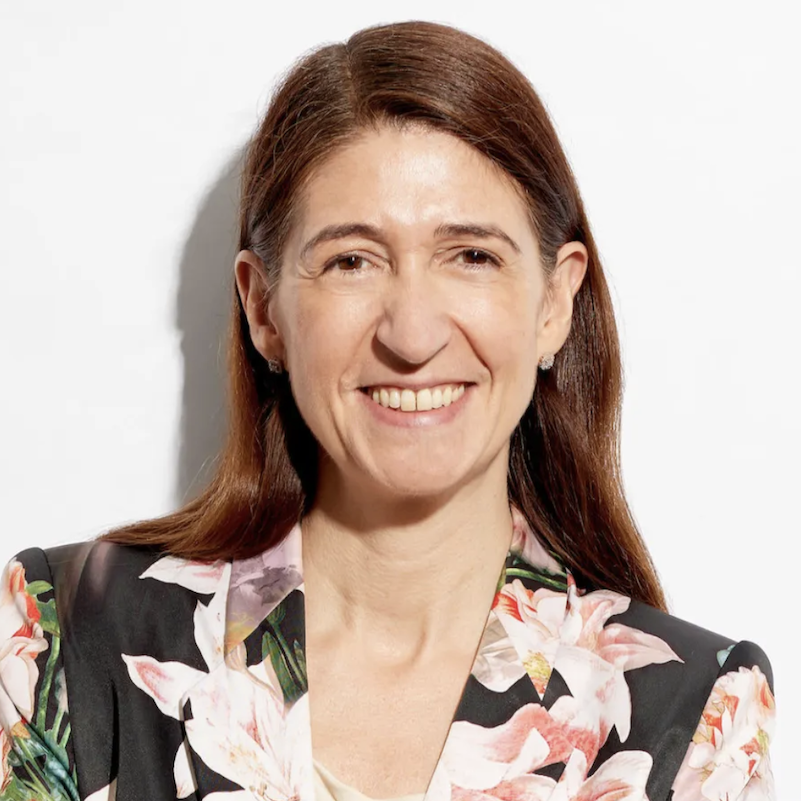
- Title CEO, Alltrna; CEO-Partner, Flagship Pioneering
Michelle Werner: Her son was diagnosed with Duchenne. That changed everything
It was a PE teacher at a school in Stockholm who suggested that Michelle Werner and her husband bring their son to see a doctor once they moved back to the US.
Werner, then an executive at AstraZeneca, was moving with her family to Maryland to take a new post heading the company’s hematology franchise. It was December 2019, and Werner’s son Caffrey, 9 at the time, was getting up off the floor in an unusual way. They now know that’s called the Gower maneuver — a result of muscle weakness and often a sign of Duchenne muscular dystrophy. In Washington, DC, the family went to Children’s National Hospital.
“Right away, when we were in that appointment with the neurologist, she said, ‘I can tell you right now, Caffrey has muscular dystrophy,’” Werner said. She reflected back to the beginning of her son’s life, when he started missing gross motor skill milestones like rolling over and sitting at around six months old. At the time, he was diagnosed with hypotonia, or low muscle tone, but doctors said he would eventually catch up with his peers.
On Caffrey’s 10th birthday, genetic test results confirmed he had Duchenne muscular dystrophy. Werner, having worked in the pharma industry for two decades, immediately went searching for clinical trials of investigational therapies for Duchenne.
“Caffrey was eligible for zero of these clinical trials because he had the wrong mutation, or he was too old already at 10 years old, or he was too ambulatory,” she said. “It was an impossible idea to me that there was really nothing that was being done or could be done for my kid, and as somebody who has really dedicated their career to trying to address some very, very challenging diseases.”
Werner and her husband fell into what she calls a “black hole period” for a few months. “You realize that everything that you thought about your kids’ future, your family’s future, might not be real anymore, and that we might be facing a completely different reality as a result of this diagnosis,” she said.
It’s now been more than four years since Caffrey’s diagnosis. Combating rare disease has become both Werner’s personal mission and her career.
In 2022, she became a CEO-partner at Flagship Pioneering, the venture firm behind Moderna, to lead a startup focused on harnessing transfer RNA, or tRNA for short. Known as Alltrna, the company’s chasing a holy grail therapy that can be used across a host of rare diseases to restore functional protein production. The company isn’t working specifically on Duchenne. Alltrna’s still in the early phases and has not yet said when it will have an experimental treatment ready for human studies.
“In the 20 years that I’d dedicated to drug development so far, it had all been focused on oncology,” Werner said. “I wanted to spend the next 20 years of my career focusing on rare diseases.”
For Caffrey, Werner’s family has been pursuing an n-of-1 treatment with Cure Rare Disease, a non-profit started by Rich Horgan, whose brother had Duchenne, to develop new treatments for rare and ultra-rare diseases. For a treatment for Caffrey’s Duchenne mutation, research in mice is being conducted with SickKids in Toronto.
When the first Duchenne gene therapy from Sarepta Therapeutics was granted a broad label by the FDA in June (and not without controversy), Werner’s family had a decision to make. Caffrey’s mutation of Duchenne enables him to produce 1% to 2% of dystrophin on his own, which may be why he was diagnosed later than what’s typical for Duchenne, Werner said, and there are no answers around how natural dystrophin and microdystrophin — which is what is made with the gene therapy — interact.
Caffrey, who recently started high school, also weighed in on the final decision, saying he did not want the gene therapy now. And after consulting with experts, Werner concluded that the family should not pursue Sarepta’s gene therapy Elevidys for Caffrey. “There is no right answer. There is maybe no wrong answer. There is only any person’s individual answer, and we just have to get comfortable with that,” Werner said.
Meanwhile in her day job at Alltrna, Werner hopes to inject the urgency she feels as a rare disease parent into her team.
“We need to take a ‘many diseases at a time’ strategy if we are going to be able to help as many patients as possible,” Werner said. “Otherwise, so many of these diseases would have no innovation whatsoever, because only a handful of them that are maybe the most prevalent would get the attention of, for example, the pharma companies that I had been working with in my career up until that point.
“There are over 6,000 rare genetic diseases, and when we’re trying to tackle 6,000 diseases, one disease at a time, it will take thousands of years for us to make a dent in all of them,” she said. “This is something that I realized as a parent: the importance of time and making progress as quickly as possible is critical, because patients really do not have time to wait. It’s a race against the clock.” — Lei Lei Wu